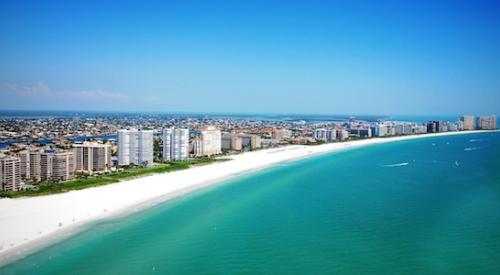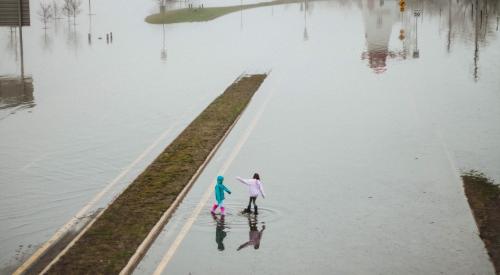Recent analysis from online real estate marketplace Zillow found that 2 million homes, worth a combined $882 billion, could be lost if ocean levels rise 6 feet by the year 2100.
The at-risk homes are 1.9 percent of the total housing stock, and they have a median value of $296,296.
The analysis was based on new research published in the scientific journal Nature, which said that the melting Antarctic ice sheets could raise sea levels by 6 feet if climate change continues unchecked. Zillow identified at-risk coastal homes using data from the National Oceanic and Atmospheric Administration.
The results of the study are not unlike the doomsday global warming scenarios envisioned by scientists and filmmakers over the last few decades. According to Zillow, 36 coastal cities would be entirely underwater, and 300 others could lose half of their homes.
Florida would be hardest hit by rising ocean levels. The state is estimated to lose up to 934,411 homes (12.6 percent of the total stock) worth $412.6 billion. Miami alone would lose 30 percent of its homes (32,986 total), for a loss of $16 billion.
Along with Florida, the states of New Jersey, New York, and Massachusetts could each lose $50 billion worth of property. And South Carolina and Louisiana each have more than 80,000 possible underwater properties (worth $45 billion and $13.2 billion, respectively). Despite its extensive coastline, only 42,353 homes in California are considered at-risk. Those properties, though, are worth a combined $49.2 billion.
Other affected cities include New York City (31,993 homes worth $27.4 billion), Boston (21,629 homes worth $24.5 billion), and Honolulu (30,557 homes worth $20 billion).
“As we move through this century, homeowners will have to consider another factor when it comes to their homes—whether rising sea levels have any impact on them,” Zillow chief economist Dr. Svenja Gudell said in a statement. “It’s easy to think about how the ocean levels can affect the coasts in an abstract sense, but this analysis shows the real impact it will have on nearly two million homeowners—and most likely more by the time we reach 2100—who could lose their homes.”
The Zillow analysis may represent a worst-case scenario. Multiple projections from NASA show the sea rising between roughly 0.8 feet and 2.5 feet by 2100.













